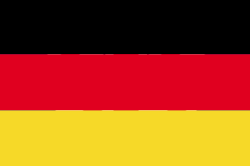An Overview of Leather
Leather is an incredibly versatile material. This short guide from Leather Naturally sets out the different properties and characteristics of the material.
Leather is one of the most versatile materials known. This is due to the unique arrangement of complex natural fibres that give the variations on the different types of hides and skins. Chemical and physical processes are tailored to give specific properties and performance to the hides and skins as they are being converted into leather. For definition: The skins from small animals are called skins, and those from large animals are called hides.
Here we highlight some of the most important variations of key leather properties.
Water-Resistant
Leather can be made to absorb water, resist water or be completely waterproof. Most leathers manufactured for the shoe, bag, upholstery and leather goods industries offer a degree of water resistance that enables the leather to get wet yet, after drying, retain the properties of elasticity and shape. Many leathers for leather goods are treated to avoid marks from water spotting in light rain.
Waterproofing can be made for specific applications, particularly for outdoor shoes and boots that allow for walking several hours in the rain without getting wet feet. Most waterproof leathers are made from cattle hides.
Thickness
Skins produce thin leathers that can be used for bookbinding, gloves, lining and garments; they have outstanding softness.
Cow leather can have a great variation of thicknesses because they can be split in layers. When split thin, leathers can be used for garment, gloves and leather goods. Medium thickness leathers, on the other hand, are more widely used for upholstery, automotive parts, shoes, bags and leather goods, whereas thick leathers are used for footwear soles and crafts.
Softness
The softness of a leather is usually associated with its thickness. The thinner the leather, the softer it will be. But there are other variables that make leather softer, particularly the type of tannage: generally speaking chrome tanned will be softer; aldehyde type tanning less soft and vegetable tanned leather firmer. For more information on different types of tanning see our fact sheet,Tanning Methods
The amount of fatty materials added also influences the softness; the higher the amount of fatty material added to the leather, the greater the softness. Process variations allow us to get a wide range of softness, from a leather glove to a footwear sole from the same raw material.
Water Absorption & Desorption (release of absorbed moisture)
This is one of leather’s unique properties, allowing the leather to absorb the moisture and with time release it into the environment. For shoes, this property creates outstanding comfort that is not replicated by any other material. Perspiration is drawn from the foot into the leather and then evaporates from the outer surface of the shoe. Leather can hold large quantities of moisture without feeling damp so the foot stays dry and comfortable without the chill of fast evaporation or puddling of cooling perspiration. So your feet don’t sweat in natural leather shoes and boots the way they tend to do when wearing synthetic and rubber footwear.
Water Vapor Permeability
Often called ‘breathability’, this characteristic allows moisture and air to permeate through the leather. This property is particularly important for shoes’ comfort; as the foot sweats it can produce large amounts of moisture that move through the leather to the outside, keeping the inside of the shoe drier and more comfortable, with a lower moisture level. Waterproof leathers that are engineered to maintain breathability while providing protection from wet conditions will provide an outstanding combined performance.
Aesthetics & Surface Pattern
There are many variations to the colour, texture, feel, smell, surface resistance and handle of leather that makes this product extremely unique and valuable. Leathers can be as natural as observed in pure vegetable leather or as refined with outstanding performance as an automotive seat. Leather is fashionable in all colours while maintaining outstanding technical performance.
Heat Insulation
One of the main reasons why leather is comfortable on the human skin is because of its strong thermal insulation capabilities.
Heat insulation is a measure of the rate at which heat passes through a material. And because leather contains a large volume of air (which is a poor conductor of heat), the heat travels incredibly slowly through the material.
Malleability
Another factor that makes leather such a favourable material is because of its ability to be moulded into a new shape. It can be made to either stiffen or can be made to be flexible and will retain its new shape as required. This is very important in footwear, since both feet are rarely exactly the same size and shape. With a little wear they soon adapt to fit perfectly.
Find out more with Leather Naturally
Leather Naturally promotes the use of globally-manufactured sustainable leather. Its website www.leathernaturally.org is a key resource for information about modern leather manufacturing and the part it plays in a more sustainable society.





